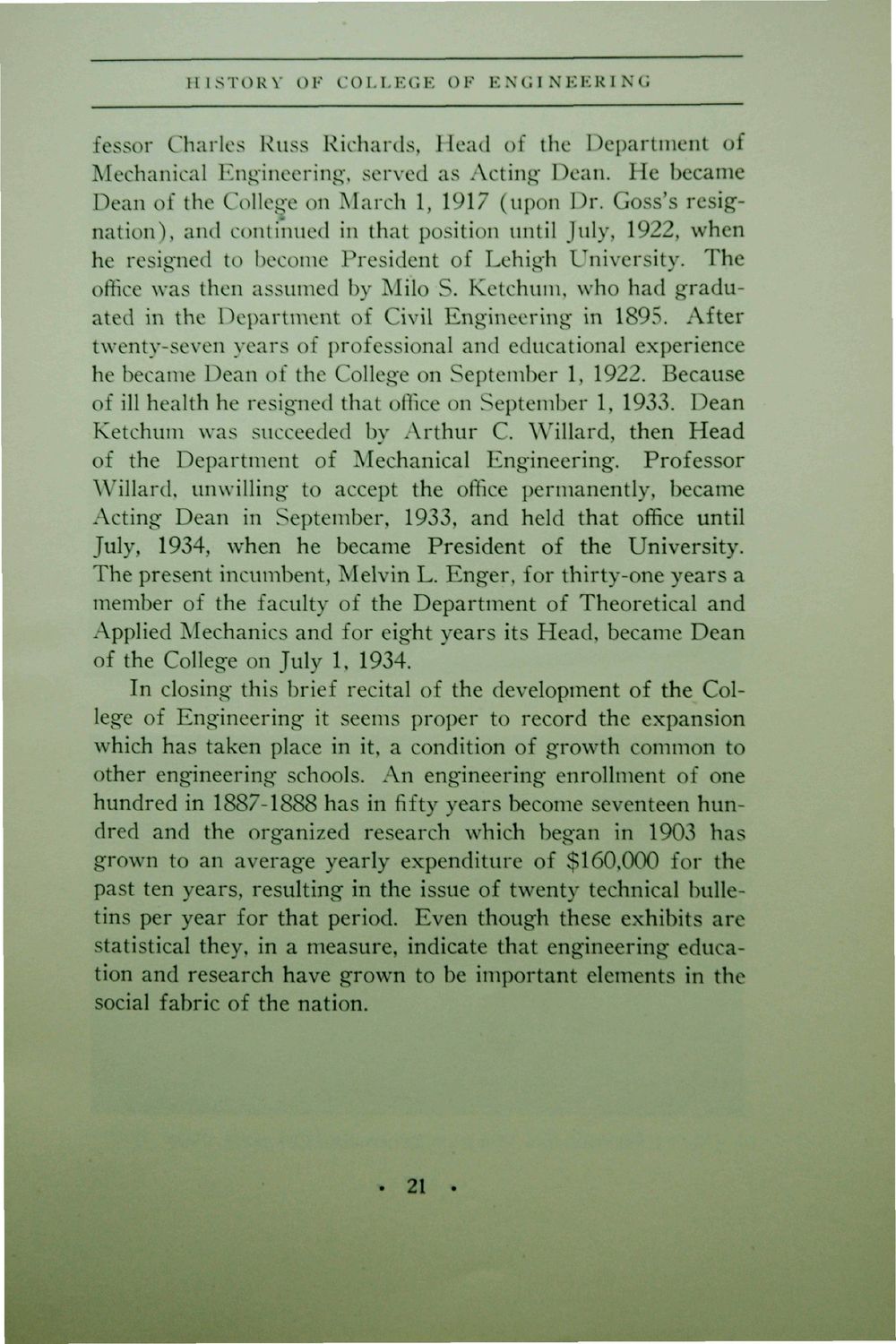| |
| |
Caption: Dedication - Talbot Lab
This is a reduced-resolution page image for fast online browsing.

EXTRACTED TEXT FROM PAGE:
HISTORY OF COLLEGE OF ENGINEERING fessor Charles Russ Richards, Head of the Department of Mechanical Engineering, served as Acting Dean. He became Dean of the College on March 1, 1917 (upon Dr. Goss's resignation), and continued in that position until July, 1922, when he resigned to become President of Lehigh University. The office was then assumed by Milo S. Ketchum, who had graduated in the Department of Civil Engineering in 1895. After twenty-seven years of professional and educational experience he became Dean of the College on September 1, 1922. Because of ill health he resigned that office on September 1, 1933. Dean Ketchum was succeeded by Arthur C. Willard, then Head of the Department of Mechanical Engineering. Professor Willard, unwilling to accept the office permanently, became Acting Dean in September, 1933, and held that office until July, 1934, when he became President of the University. The present incumbent, Melvin L. Enger, for thirty-one years a member of the faculty of the Department of Theoretical and Applied Mechanics and for eight years its Head, became Dean of the College on July 1, 1934. In closing this brief recital of the development of the College of Engineering it seems proper to record the expansion which has taken place in it, a condition of growth common to other engineering schools. An engineering enrollment of one hundred in 1887-1888 has in fifty years become seventeen hundred and the organized research which began in 1903 has grown to an average yearly expenditure of $160,000 for the past ten years, resulting in the issue of twenty technical bulletins per year for that period. Even though these exhibits are statistical they, in a measure, indicate that engineering education and research have grown to be important elements in the social fabric of the nation. -. 21 .
| |